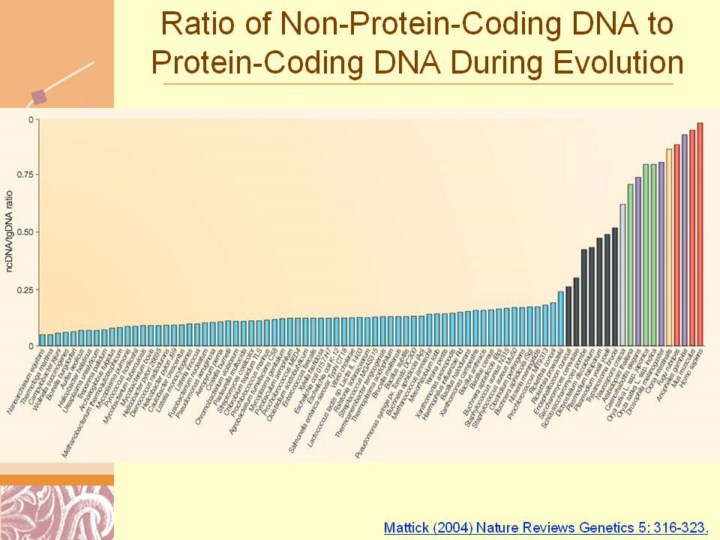| front |1 |2 |3 |4 |5 |6 |7 |8 |9 |10 |11 |12 |13 |14 |15 |16 |17 |18 |19 |20 |21 |22 |23 |24 |25 |26 |27 |28 |29 |30 |31 |32 |33 |34 |35 |36 |37 |38 |39 |40 |41 |42 |43 |44 |45 |review |
 |
Mattick (2004) Nature Reviews Genetics 5: 316-323
The ratio of non-coding to protein-coding DNA rises as a function of developmental complexity.Prokaryotes have less than 25% non-coding DNA, simple eukaryotes have between 25 and 50% non-coding DNA and more complex fungi, plants and animals have more than 50%, rising to approximately 98.5% non-coding DNA in humans — which also have a genome size that is three orders of magnitude larger than prokaryotes. Note that this analysis corrects for ploidy, whereas pre-genomic estimations of the amount of DNA in different organisms did not. The different colours represent prokaryotes (bacteria and archaea) (blue), simple eucharyotes (black), Neurospora crassa(grey), plants (green), non-chordate invertebrates (nematodes, insects) (purple), Ciona intestinalis(urochordate) (yellow) and vertebrates (red). ncDNA, non-coding DNA; tgDNA, total genomic DNA. Reproduced with permission from © (2003) BioMed Central Ltd. |